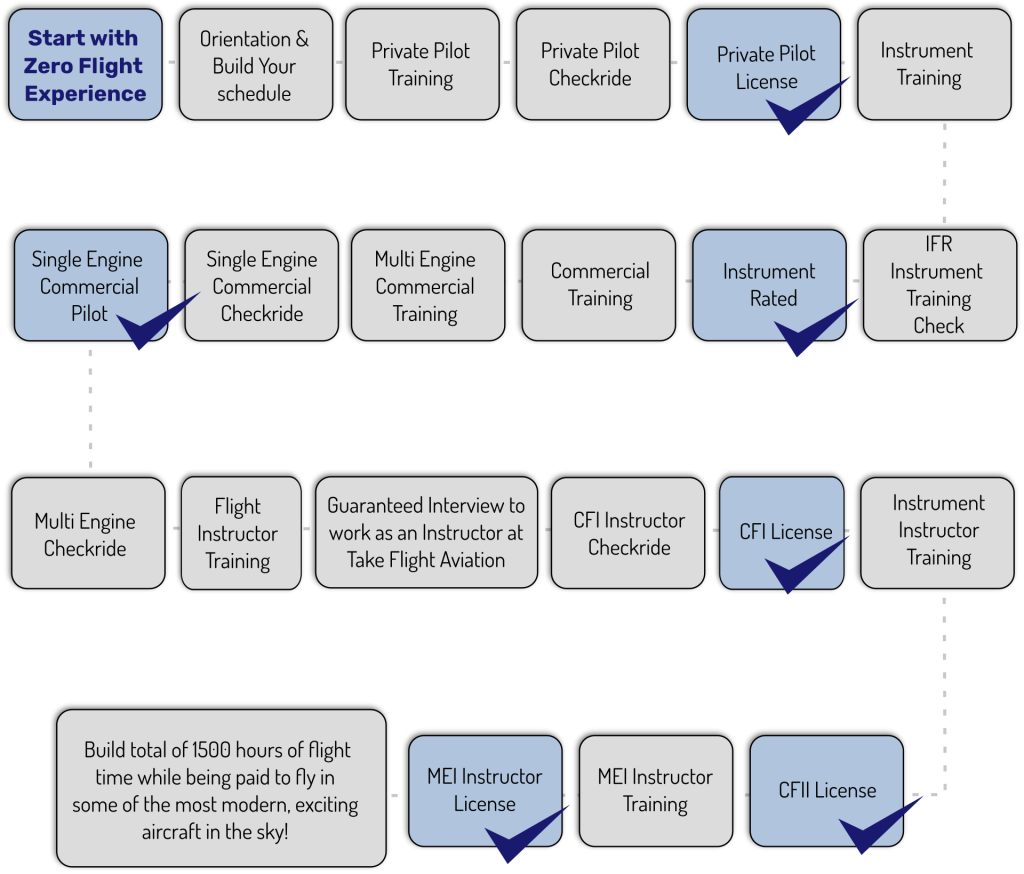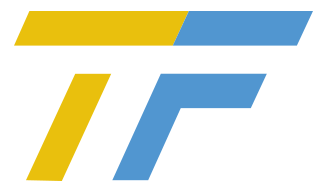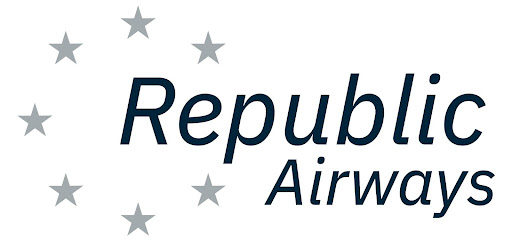The path to becoming an airline pilot is well-traveled and clearly defined. If done right, each step can be as much fun as the destination!

Step One – Earn your Private Pilot Certificate
Step Two – Earn your Instrument Rating
Step Three – Earn your Commercial Certificate
Step Four – Earn your Multi Engine Rating
Step Five – Earn Your Certified Flight Instructor Certificate(s)
Step Six - Work as a Certified Flight Instructor with Take Flight Aviation, earning great pay while building the 1500 hours of experience required for an airline pilot position.
Step Seven – Apply to the regional airlines of your choice as you’re now ready to fly smaller airliners. Some pilots opt to make a career or this, others move on to bigger equipment at the mainline carriers after a few years.
The faster you get to the airlines, the quicker that all-important seniority number is assigned to you. Airlines are seniority-based organizations, so the higher up the list you are, the more control over your schedule you have and the higher your salary. Take Flight Aviation has the programs, equipment, and airline relationships to get your career on track properly and quickly.
For instance, we have an ongoing partnership with Republic Airways which provides great opportunities for our students. Republic Airways, based in Indianapolis, operates a fleet of Embraer 170/175 aircraft. The airline provides fixed-fee flights operated under major airline partner brands of American Eagle, Delta Connection and United Express. Republic Airways offers an early interview for the first officer position through their RJet Cadet program. Click on the logo below to learn more!
With a growing shortage of professional pilots, there’s no better time to train then the present. Start now!
Full Program Financing Available with no payments until you begin your career as an Airline Pilot.

